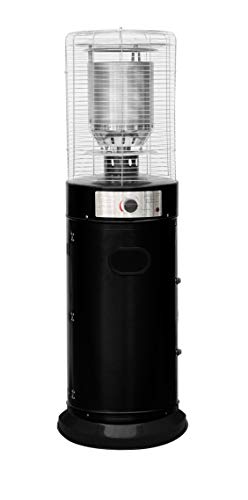Buying Gas Radiant Heaters: A Comprehensive Guide
Gas radiant heaters have actually acquired popularity recently for their efficiency and capability to supply instantaneous warmth. As more homeowners and organizations try to find methods to keep their areas comfortable, understanding the functions, benefits, and considerations when acquiring these heating units can be really helpful. This article dives into the intricacies of gas radiant heaters, helping prospective buyers in making notified decisions.
What are Gas Radiant Heaters?
Gas radiant heaters are devices that use propane or natural gas to emit heat straight into a room. Instead of heating the air, they warm objects and individuals in their vicinity, providing convenience quicker and effectively. These heaters are popular for both indoor and outdoor settings due to their flexibility and efficiency.
Key Features of Gas Radiant Heaters
- Direct Heating: Unlike standard heaters that warm the air, gas radiant heaters provide direct heat, making them an efficient option for quickly warming up areas.
- Portability: Many designs are readily available as portable systems, enabling them to be quickly moved from one location to another.
- Fuel Variety: Gas radiant heaters can be powered by natural gas or propane, offering users versatility based upon schedule and choice.
- Adjustable Settings: Most gas radiant heaters come with adjustable heat settings, permitting users to customize the level of heat based upon their requirements.
Benefits of Gas Radiant Heaters
- Energy Efficiency: These heaters transform gas into heat efficiently, resulting in lower energy expenses compared to electrical heaters.
- Quick Heating: Radiant heat is felt nearly right away, making these heaters suitable for abrupt temperature level drops.
- Low Maintenance: Gas radiant heaters normally need less maintenance than electric models, making them a hassle-free alternative.
- Eco-friendly: When powered by clean natural gas, these heaters can be a more ecologically sustainable choice compared to other heating techniques.
Types of Gas Radiant Heaters
When it concerns choosing a gas radiant heater, it's important to understand the different types offered. Below are the most common options:
- Indoor Gas Radiant Heaters: Designed for indoor areas, these heaters are typically vented or unvented and typically featured built-in security features.
- Outdoor Gas Radiant Heaters: Commonly used in patios or outdoor dining locations, these heaters are designed to withstand the components.
- Wall-Mounted Gas Radiant Heaters: A space-saving choice, these units are ideal for smaller sized areas and can be equipped with different heat outputs depending on the location's requirements.
- Freestanding Gas Radiant Heaters: These portable designs can be utilized in various areas, ideal for those who need flexibility.
Purchasing Guide: How to Choose the Right Gas Radiant Heater
When buying a gas radiant heater, a number of elements must be thought about to ensure you pick the ideal model for your space:
1. Heating Capacity
- Measured in BTUs (British Thermal Units), the heater's capability figures out how much location it can efficiently warm. Purchasers must examine their specific requirements based upon room size.
| Space Size (sq ft) | Recommended BTUs (for Gas Radiant Heaters) |
|---|---|
| 100 - 200 | 5,000 - 10,000 BTUs |
| 200 - 400 | 10,000 - 20,000 BTUs |
| 400 - 600 | 20,000 - 30,000 BTUs |
| 600 - 800 | 30,000+ BTUs |
2. Type of Gas
- Consider whether you will be utilizing propane or natural gas, as different heaters deal with different fuel types.
3. Security Features
- Try to find models geared up with safety functions such as automated shut-off valves, tip-over defense, and oxygen depletion sensing units.
4. Installation Requirements
- Some heaters may require professional installation, especially vented models. Be sure to think about the expenses and requirements related to setup.
5. Portability
- If versatility is necessary, consider portable models that can be easily moved from one place to another.
Installation and Maintenance
Gas radiant heaters are generally straightforward to set up, specifically portable models. However, vented options might demand professional setup to ensure they satisfy local safety codes.
Upkeep usually includes:
- Regular cleansing to avoid dust accumulation.
- Checking gas connections and fittings for leakages.
- Guaranteeing security functions are functional.
Pointer: Regular checks around the unit can assist extend its life expectancy and preserve security.
Often Asked Questions (FAQs)
Q1: Are gas radiant heaters safe for indoor use?A1: Yes
, as long as they are effectively vented and equipped with needed safety functions, they can be safely utilized indoors.
Q2: Can gas radiant heaters be utilized in enclosed spaces?A2: Unvented gas heaters can pose risks in enclosed areas due to potential suffocation or carbon monoxide gas accumulation. Always ensure enough ventilation. Q3: How do I understand what size heater I need?A3: The suitable size depends upon the area you intend to heat. Describe the BTU chart
above to identify your needs. Q4: What is the difference in between propane and gas heaters?A4: The main distinction lies in their energy source
; propane is delivered by means of tanks, while natural gas is typically piped into homes. Q5: How can I take full advantage of efficiency?A5: Ensure the heater is appropriately sized for your space, keep it frequently, and think about using it in combination
with other heating methods for maximum comfort. Outdoor Living can be a fantastic addition to any home or service, using energy-efficient and quick heating solutions. By comprehending the different types, functions, and considerations
when acquiring, buyers can make informed choices that fulfill their heating requires. With the ideal option, these heaters supply convenience, dependability, and a welcoming environment during colder seasons.

